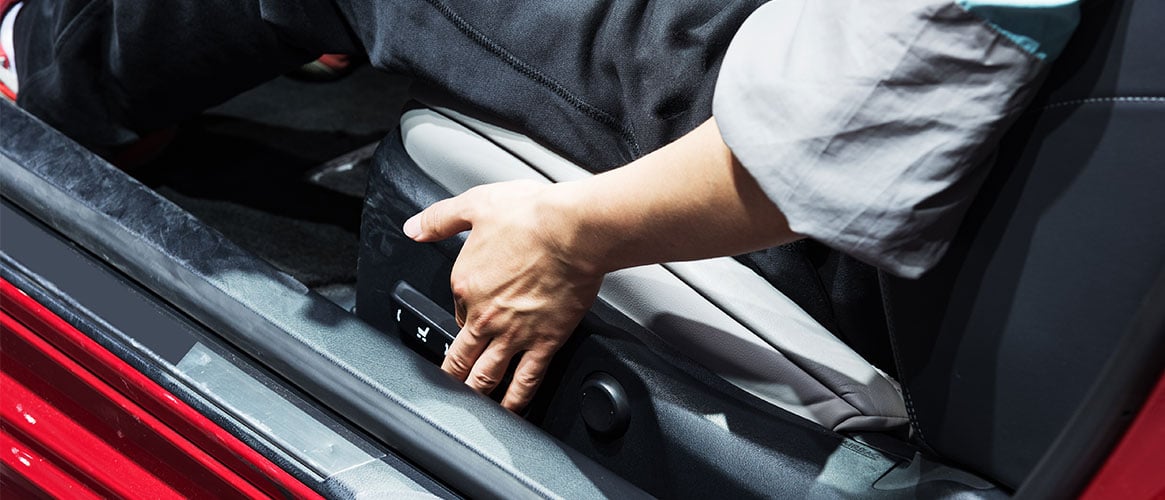Whether driving in to work, driving for pleasure, or if driving is your job, long term driving poses risks of back injury especially if vehicles need to be loaded or unloaded. Driving can also contribute to neck, shoulder, and leg pain as well as discomfort from a lack of circulation.
Driving provides different potential ergonomic stressors from just sitting, as we may be subjected to poorly-maintained roads and unsupported seated postures. When driving, our feet are out in front of us, not on the floor supporting and stabilizing our body. These factors, combined with loading and unloading materials and long hours of sitting, can increase the risk of back injury. The following are some vehicle ergonomic tips for reducing the risk of back injury and for improving comfort while driving.
Getting in and out
- When getting into a vehicle, sit down first with both feet on the ground. Then, swivel your body by bringing your legs around to the pedals using the steering wheel to assist.
- Put large objects (shopping bags, purses, briefcases, laptops) in the back seat or trunk before you get in rather than lifting them across your body to the passenger seat after you get in. Better yet, put them on the seat next to you from the passenger side before getting into the car.
- Jumping out of an over-the-truck cab causes what is called “impact stress” on the discs and soft tissue of the low back. Always use three points of contact to get into and out of the cab for both safety and control of impact stress.
- Take a minute to warm-up and stretch or walk around before loading or unloading the vehicle.
While driving
- Remove objects, such as a wallet, out of your back pocket. Having something in your back pocket can cause your hips to be uneven and contribute to back problems.
- Change your posture as much as possible. If possible, change driving duties with your passengers. Make frequent, small adjustments to your driving posture.
- If you are driving long distances, take frequent breaks. Get out of the vehicle and do some warm-ups and stretches or walk around as often as possible.
- Adjust your driving position as much as your seat will allow.
- Raise your seat as high as possible to improve your vision of the road while still allowing for good pedal control.
- If your seat has a built-in adjustable lumbar support or you use a lumbar cushion, it should fit snugly against your lower back.
- Head restraints help protect the neck from potential whiplash in a collision, but proper adjustment is critical. Adjust head restraints so that the top is about even with the top of your head.
- Adjust and use your mirrors to avoid awkward neck and twisted postures.
- Change hand positions on the steering wheel often. Good vehicle ergonomics includes using a relaxed grip, just tight enough for control.
- Place your hands on the steering wheel so that your elbows are close to your sides, not so high that you have to reach up for the wheel.
- Place your hands on the wheel at the 3- and 9-o’clock positions. This will reduce the amount of strain on your shoulders and puts your hands in a safer position if your air bag deploys.
